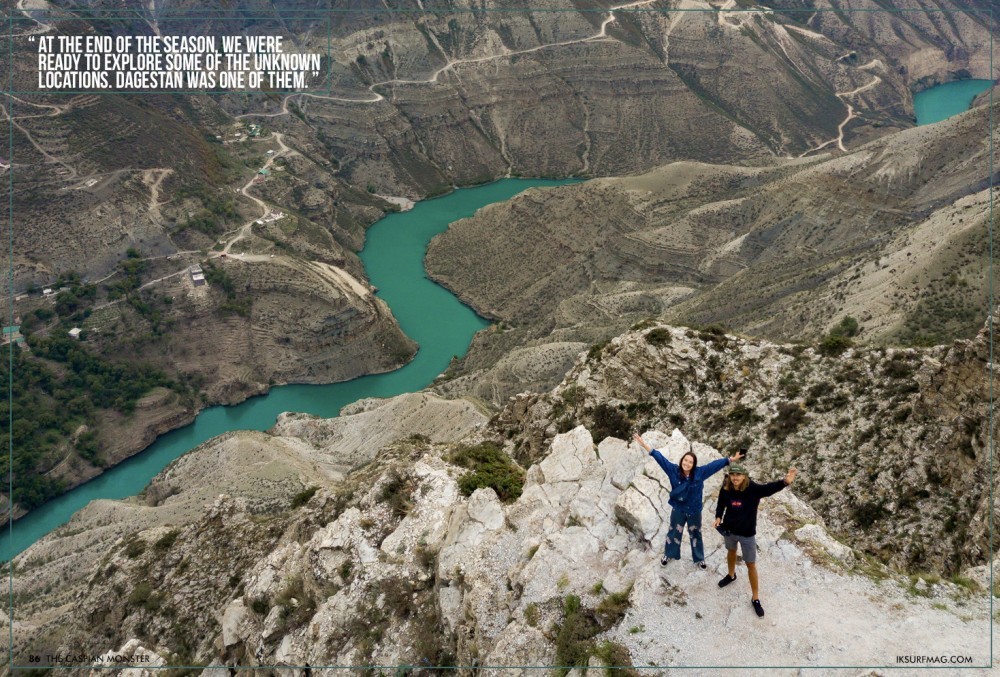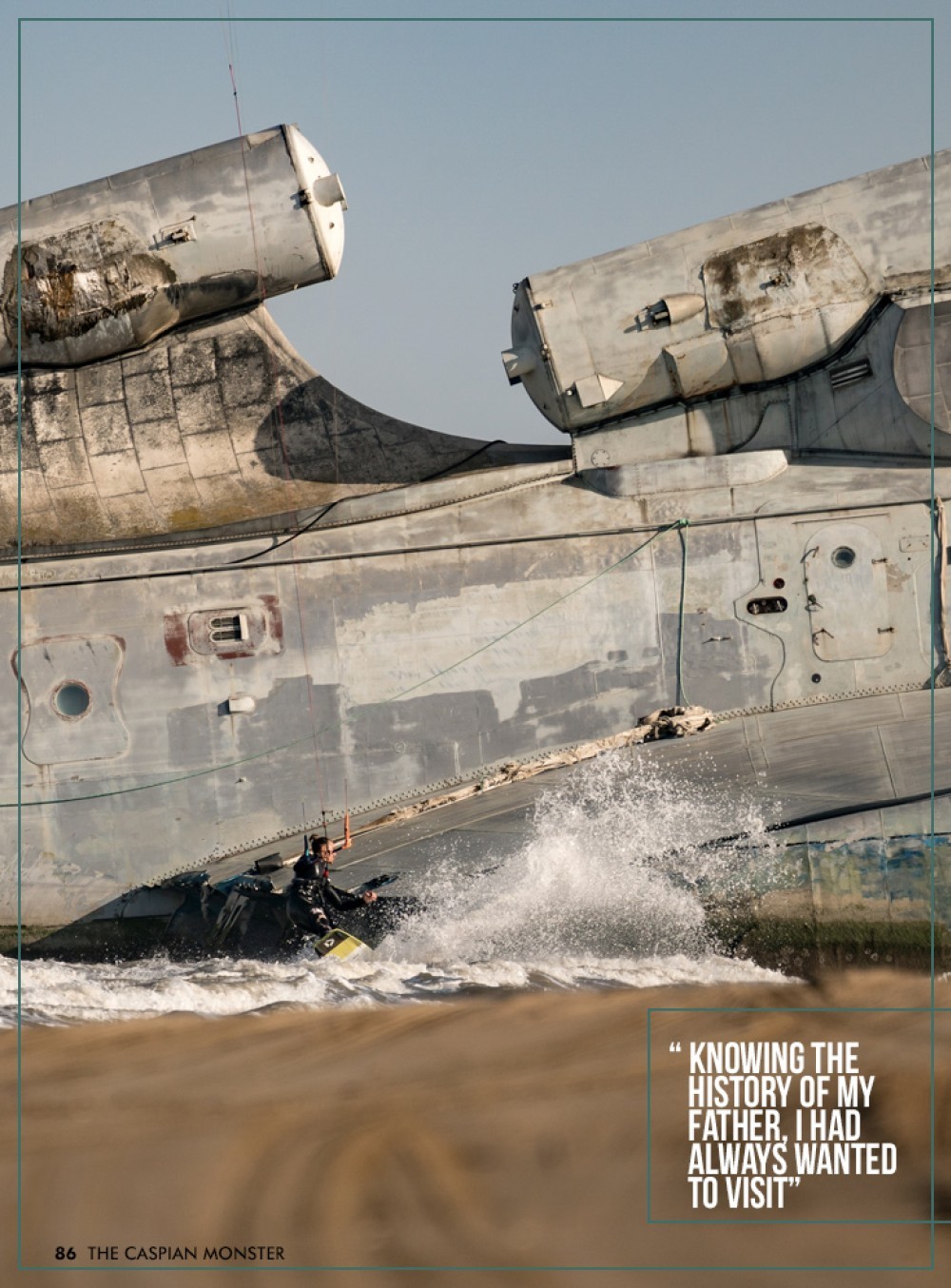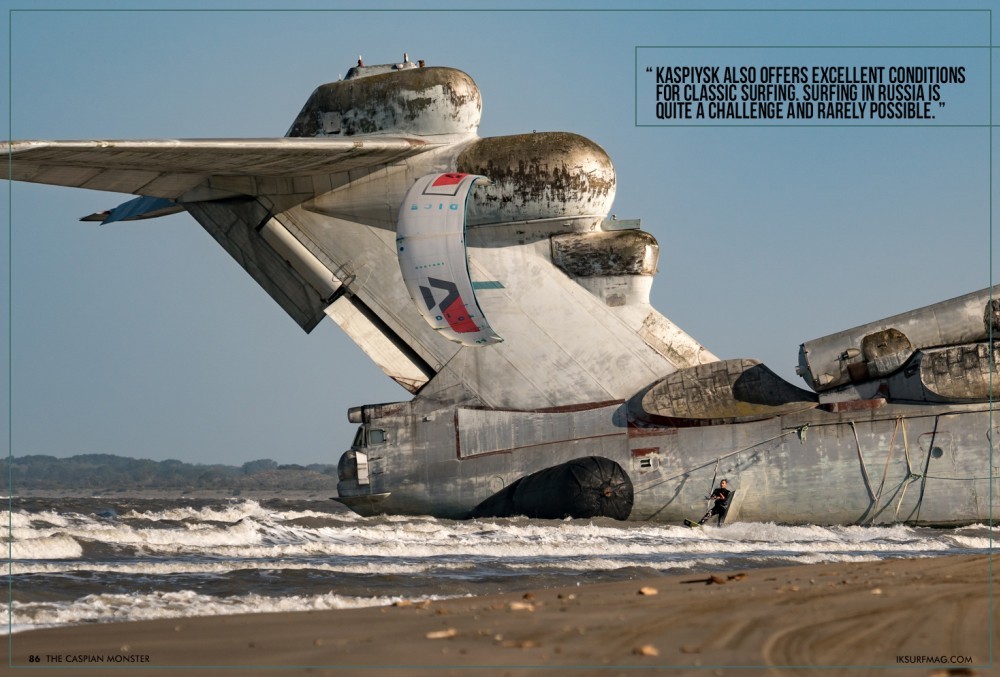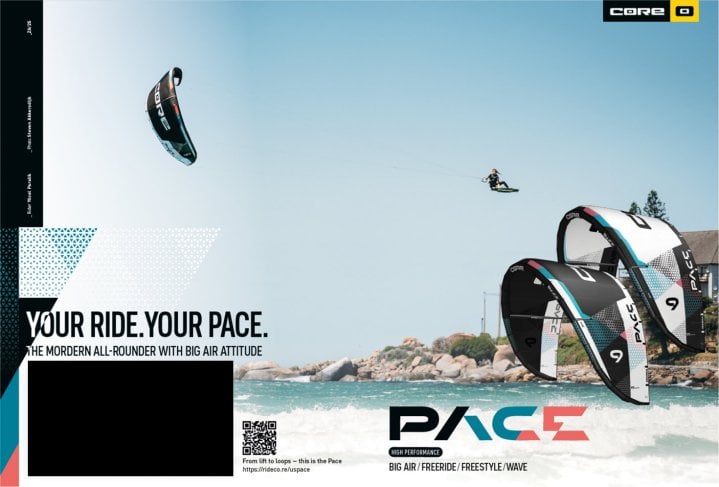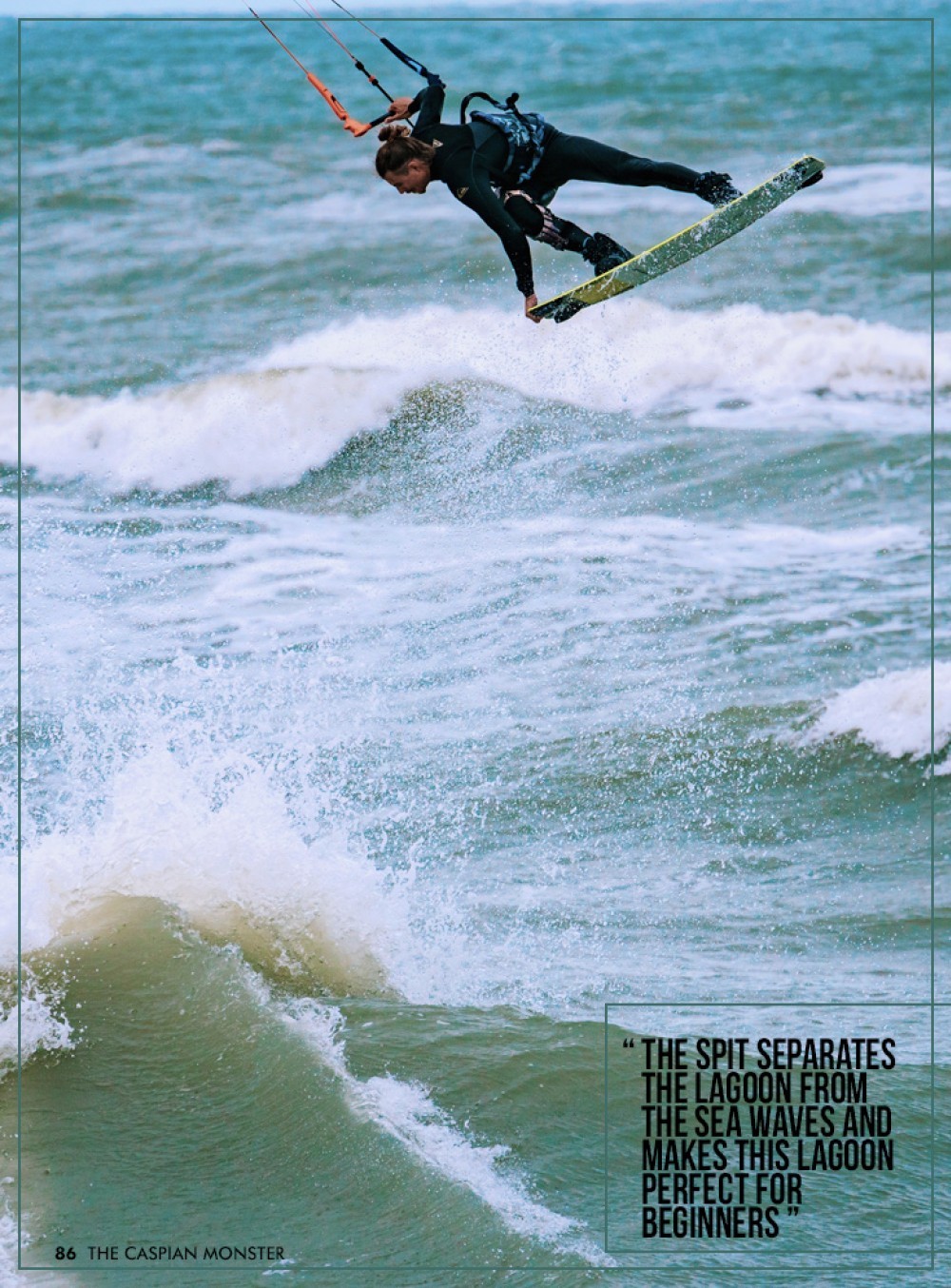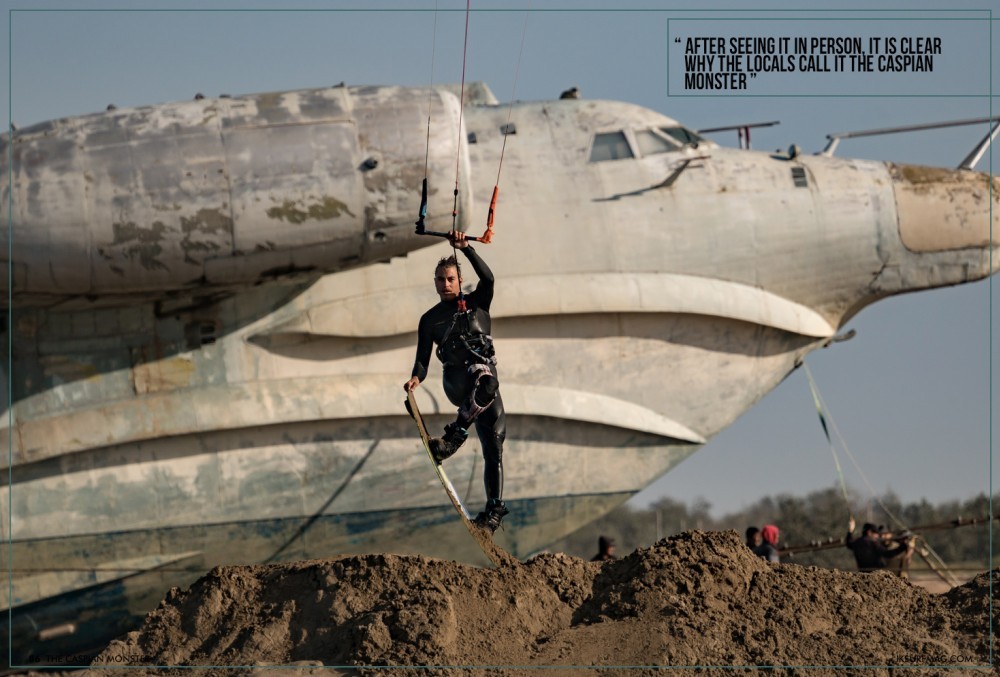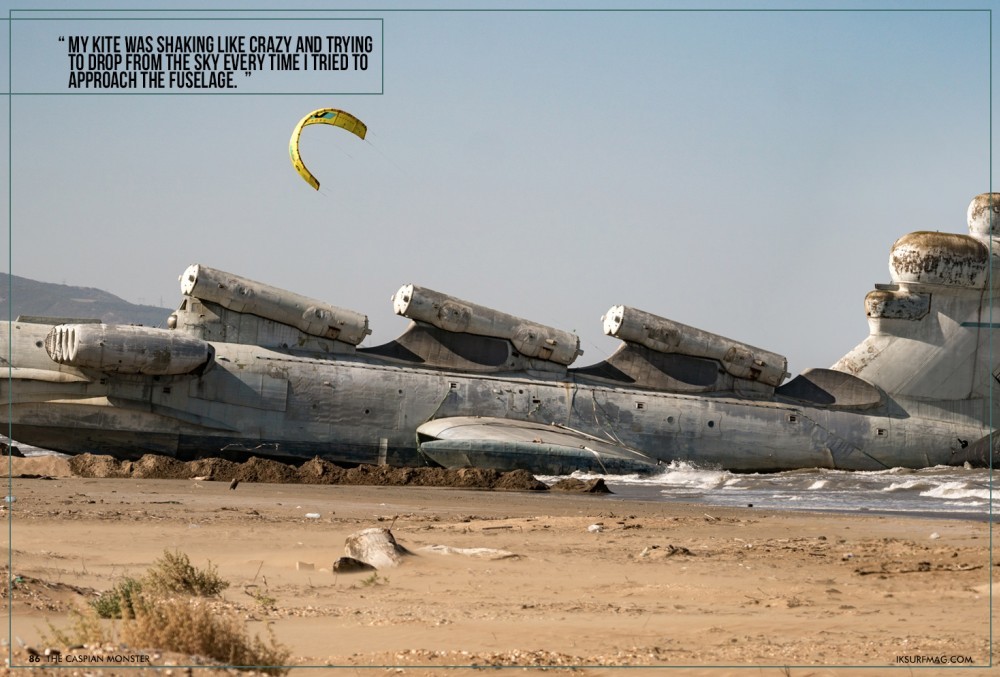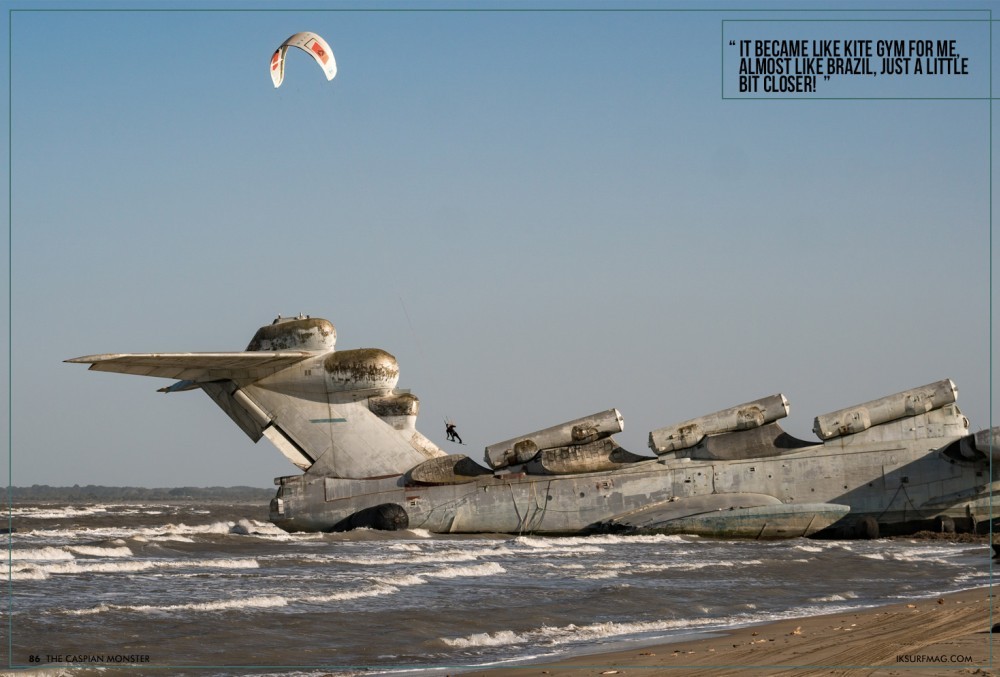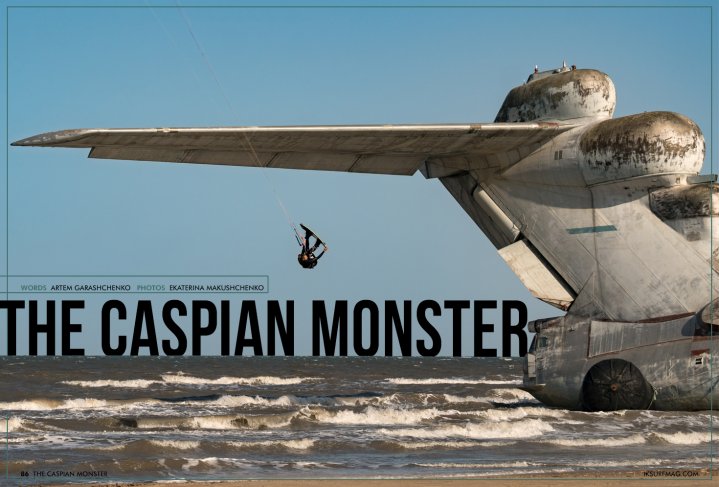
The Caspian Monster
Issue 86 / Tue 13th Apr, 2021
Russia's 37,653 km of coastline hide a wealth of secrets, and Artem Garashchenko takes us behind the Iron Curtain to explore a relic from the Soviet Era. Yes, this is a kiteboarding article!! Read the whole story, exclusively in IKSURFMAG!
In Russia, the 2020 season was relatively short but very intense. We started to ride at the beginning of July and had ideal kiting conditions for the next three months. Due to locked borders, all kiters had to stay in Russia; therefore, all of the well-known kite spots were unusually busy. At the end of the season, we were ready to explore some of the unknown locations. Dagestan was one of them.
The Republic of Dagestan sits on the Caspian Sea, at the southernmost tip of Russia. In the native language, Dagestan means the "country of mountains". Located on the northwestern end of the Caucasus Major mountain range, Dagestan is covered in mountains! With 30 peaks that reach higher than 4,000 metres, it is an awe-inspiring sight to see.
When it comes to kite spots, the Caspian Sea has 405 kilometres of coastline on the east side of the Republic of Dagestan. That's a lot of kite spots to choose from! With the primarily south-east wind blowing 3-4 days per week, no-wind days are few and far between. We had only one windless day on our trip, and we took advantage of the time off the water to visit the Sulak Canyon. It is the deepest canyon in Europe and goes even deeper than the Grand Canyon.
Kiting was not my first connection to Dagestan. While I had never been there before, my father was born in a neighbouring republic. He lived in Dagestan for most of his childhood, spending much of his time mountaineering and ascending local mountains. He became one of the youngest professional alpinists at that time. Knowing the history of my father, I had always wanted to visit this part of the world.
The timing was perfect. After a busy season with lots of projects on the go, we were ready for an adventure. Luckily, we had some free time before we had to return to Moscow. The forecast looked spectacular, so we packed our gear and got ready to go!
The coastline is similar to Brazil, with different conditions along the entire length of the coast. One day we did a 40 km downwinder to explore the coastline. Along the way, we pressed butters on perfectly flat water after the seaport pier. We caught almost every kind of wave from little chops up to 3-metre swells. We rode around the abandoned 8th building of the DagDiesel factory, a naval weapon test area in the centre of the Caspian Sea. Our downwinder ended in Kaspiysk on the central and closest spot to Makhachkala, the Dagestan capital and only 10 minutes from the airport.
There is a kite centre with a friendly local community in Makhachkala. We spent a few days there riding waves with every type of board that we had brought. I rode only one kite, my Duotone Dice 11m, and switched boards according to the wind strength. I did big air on a twin tip in stronger winds but chose the hydrofoil for the light wind days. When the wind was strong, and the waves were massive, I took out the surfboard. The central spot in Kaspiysk is the perfect playground for advanced riders.
Kaspiysk also offers excellent conditions for classic surfing. Surfing in Russia is quite a challenge and rarely possible. You have to catch a storm with the right wind direction, and when it stops, you end up with just one or two days of good swell on the Black Sea or the North Sea. If you can fly to Kamchatka, you will find more consistent waves. It was funny that my first experience of surfing in Russia also happened in Dagestan! It was, without a doubt, a fun and memorable experience!
When we grew tired of the waves, we were ready to check out some flat water. Another fantastic spot is the Sulak lagoon, one hour drive from Kaspiysk. It is a vast shallow lagoon in the Sulak river's mouth, which flows straight from the Sulak canyon. The spit separates the lagoon from the sea waves and makes this lagoon perfect for beginners and freestyle oriented riders.
On the last day, we were ready to pack up and go home, but the locals invited us to visit just one more spot, and we couldn't pass up the chance for another adventure. Another two hours down the road, and we discovered the giant Lun-class Ekranoplan.
At first glance, it appeared as if this colossal plane had landed on the water. While it resembles a plane, it operated more like a vehicle or a boat. Still, it doesn't fit into any of these categories! A craft that uses ground effect to 'fly' is entirely different and is often classified as a maritime vehicle or ship. The turbofans mounted on the front propelled it off the water with the help of the flying boat hull design. It would 'fly' only 4 metres above the surface of the water.
This craft was built in the USSR in 1986 and carried six guided missiles, ready for anti-surface warfare. It could go up to 550 km/h, and the high speed made it invisible on radar. It is hard to imagine what this incredible craft looked like in motion. After seeing it in person, it is clear why the locals call it the Caspian Monster.
The history of this craft is a short one. The craft that we were standing in front of was the only one of its class ever built. It was part of the Black Sea Fleet from 1987-1990 and then retired due to high costs and the dissolution of the Soviet Union. This unusual beast sat unused at a naval station in Kaspiysk until the summer of 2020 when the local government decided to turn the Lun-class Ekranoplan into a tourist attraction.
It was a simple idea. The government would tow it from Kaspiysk naval base to Derbent, Dagestan, where it would go on display at Patriot Park. After a 100 km journey across the Caspian Sea, the destination was in sight. However, the Lun-class Ekranoplan never finished the trip. It became stuck in the sandy beach just south of Derbent, where it remained from July until December 2020. The managing team did not have the adequate equipment to drag this 286,000 kg craft along the sand.
I like to ride in unusual places and around unique objects, so arriving at the Caspian Monster while it was still stuck in the sand was a jackpot! I spent the entire day riding as close as possible to this strange craft. From the upwind side, it was fascinating to examine every detail. At 19 metres in height and 73 metres long, I was in awe of its size. I could easily fly my kite under the back wing of the plane. The downwind part was harder to explore because the Ekranoplan's magnitude created turbulent wind and a massive wind shadow. My kite was shaking like crazy and trying to drop from the sky every time I tried to approach the fuselage.
Of course, I had to try to jump over the craft. The wind was side shore and strong enough, but the water conditions and the giant wings got in the way of my plan. The wind near the ship was too turbulent, and I would not have made it over in one piece! As the day drew to a close and the wind became lighter, I switched from my Duotone 9m Vegas to the 11m Dice. I wanted to spend every moment I could exploring this epic piece of machinery.
I had so much fun freeriding around, doing sprays and jumping over the wings. I literally touched history! When you ride under the wing, it is as if you can feel the power of this crazy machine from the USSR. It was an insane experience. I'm so thankful to my girlfriend Kate, who captured the session from different angles all day long.
The local kite community made the experience even better. It is such a small community that, one day, a guy asked my girlfriend to take a photo of him with six parked kites in the background. He was excited because he had never seen so many kites at his spot!
I was surprised by how friendly and helpful the local kiters were. I want to thank them, especially Marat Aliev and Eduard Gadjiev, for pushing kiteboarding in Dagestan. I never expected so many good vibes from their side.
We spent six out of seven days on the water until we couldn't ride anymore. It became like kite gym for me, almost like Brazil, just a little bit closer! I believe this spot's popularity will grow in the next few years until Dagestan is on the map as one of Russia's great kite spots.
By Artem Garashchenko




